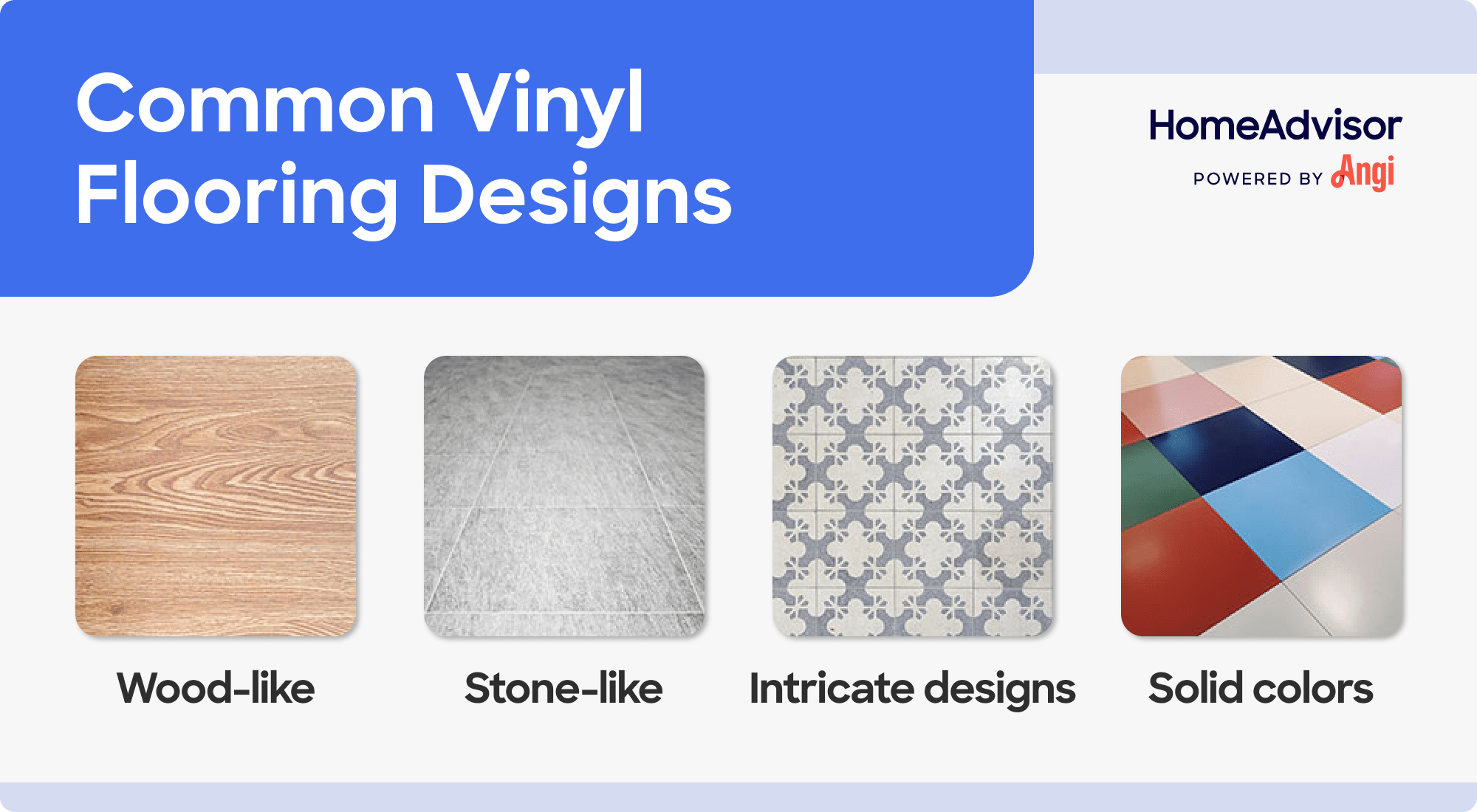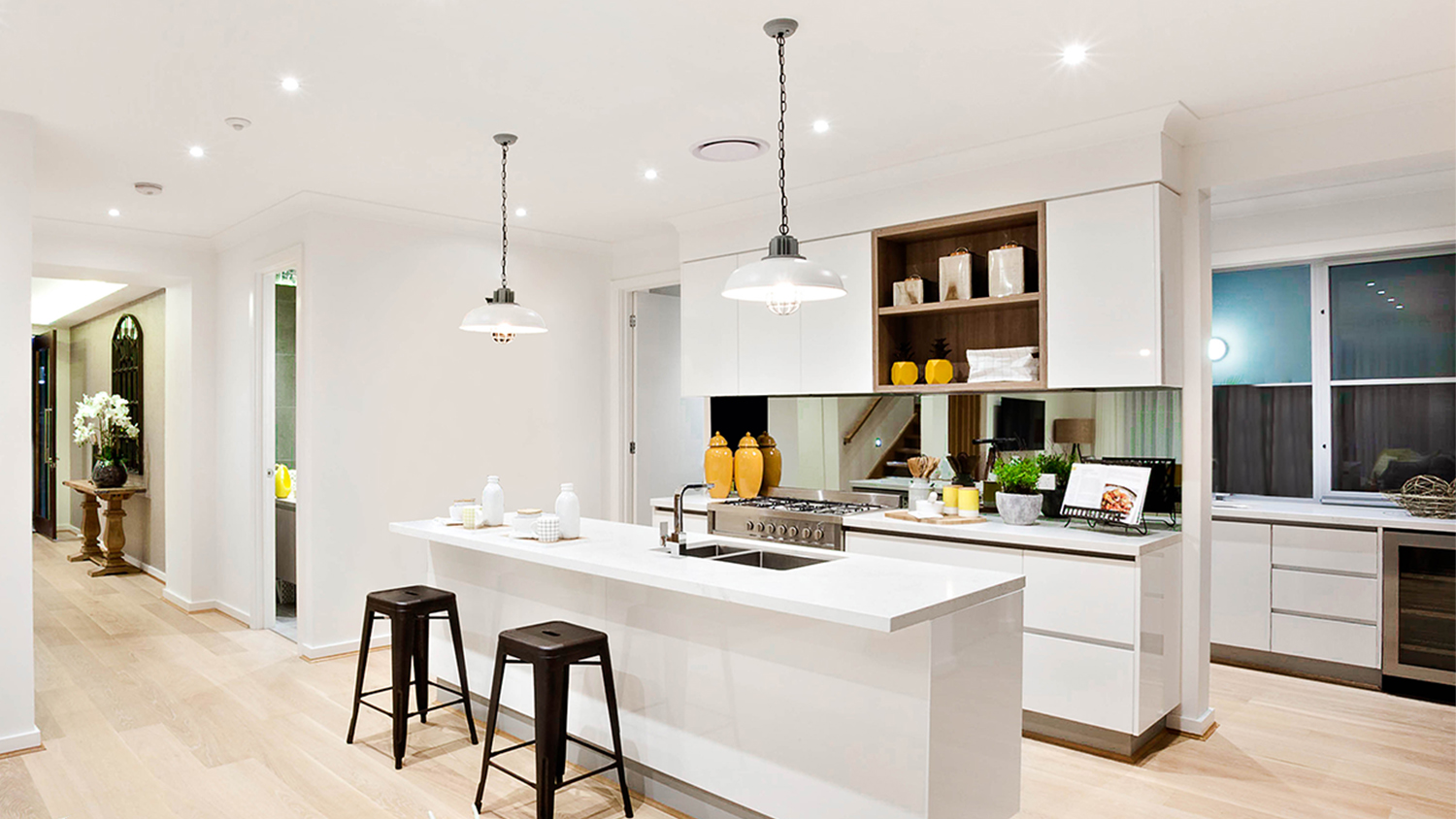
Budget for the cost to refinish hardwood floors based on factors such as square footage, wood type, labor, refinishing method, prep, task type, and more.
The average cost to install vinyl flooring is $2,522


Installing vinyl or linoleum flooring costs between $350 and $8,950, with an average price of $2,522.
Material type, flooring style, and project size affect the total price.
Labor costs $3 to $10 per square foot, and additional costs may include subfloor repairs or removal of old flooring.
Professional flooring installation enhances your home’s appearance and value, ensuring high-quality results that add to its overall aesthetic appeal and value.
This article was updated using automation technology and thoroughly reviewed for accuracy by HomeAdvisor Editor Ryan Noonan.
Installing new vinyl or linoleum floors costs between $350 and $8,950, with an average cost of $2,522. Your final price depends on three key variables: material quality, style, and room size. On most jobs, materials cost $2 to $7 per square foot (ranging from $1 to $14 for specialty products), and labor adds another $3 to $10 per square foot. Hiring a professional protects your budget with accurate cuts, tight seams, and a finish that lasts for years.
A handful of details—especially room size—carry the most weight when you’re pricing new vinyl floors.
Because flooring is sold by the square foot, a single room costs far less than covering the whole house. Many installers also lower their per-foot rate on large jobs, so ask if a volume discount is available.
| Square Footage | Average Cost |
|---|---|
| 100 | $500 |
| 150 | $750 |
| 250 | $1,250 |
| 300 | $1,500 |
| 500 | $2,500 |
Vinyl costs less upfront than linoleum, while linoleum offers extra longevity and greener ingredients. Within each category, prices climb as you move from budget-friendly sheets to higher-end planks or tiles.
Professional flooring installers charge $3 to $10 per square foot for installation, with materials adding another $2 to $7. Removing and hauling away old flooring increases the bill.
Surprises can pop up during your flooring installation and may increase your final bill. Subfloor replacement costs $3 to $10 per square foot ($400 for minor repairs), while tearing out old flooring averages $32 per hour or $1 to $2 per square foot. Water damage fixes and other floor repairs will also increase the total.
The most significant factor that can impact the cost to install vinyl or linoleum flooring is the type of flooring you choose.
| Type of Flooring | Average Cost per Sq. Ft. |
|---|---|
| Vinyl sheet | $1–$2 |
| Luxury vinyl plank | $3–$10 |
| Luxury vinyl tile | $2–$10 |
| Standard vinyl plank | $2–$7 |
| Standard vinyl tile | $1–$4 |

Vinyl sheet is the wallet-friendly pick at $1 to $2 per square foot. Since vendors sell vinyl sheets in 6- or 12-foot rolls, you may end up purchasing more flooring than you actually need. Having extra flooring is beneficial in case of mistakes or future repairs. However, vinyl sheet flooring can be challenging to install, so hiring a professional is recommended.
Luxury vinyl plank (LVP) and tile (LVT) offer increased thickness and durability compared to sheets. For the added thickness and premium look, you’ll spend between $3 and $10 per square foot for LVP, and between $2 and $10 per square foot for LVT.
Standard non-luxury tiles and planks may be more affordable, but they’re still more expensive than vinyl sheets. For standard vinyl plank, expect to spend between $2 and $7 per square foot, while vinyl composition tile ranges from $1 to $4 per square foot. Higher-end planks and tiles mimic the grain of real wood and often install faster than sheets.
DIY vinyl flooring installation can trim labor costs. Still, it requires purchasing the right tools, adhesives, and sealants, as well as setting aside several days for careful measuring and precise cutting. That’s why many homeowners turn to a local vinyl flooring installer, who charges $3 to $10 per square foot for labor. A seasoned pro delivers tight seams, minimal waste, and a clean finish that holds up over time.
While vinyl flooring offers excellent value, there are several strategies to reduce your installation costs further:
Collect at least three bids from local flooring installers to maintain competitive pricing and leave room for negotiation.
Plan the job for fall or winter, when installers are slower and more willing to discount.
Pull up and dispose of old flooring yourself to shave $1 to $2 per square foot off labor.
Reserve standard-grade planks for low-traffic spots to balance looks and cost.
Shop seasonal sales or clearance events—material discounts of 10% to 30% are standard.
No place is more important than your home, which is why HomeAdvisor connects homeowners with local pros to transform their houses into homes they love. To help homeowners prepare for their next project, HomeAdvisor provides readers with accurate cost data and follows strict editorial guidelines. We surveyed thousands of real customers about their project costs to develop the pricing data you see, so you can make the best decisions for you and your home. We pair this data with research from reputable sources, including the U.S. Bureau of Labor Statistics, academic journals, market studies, and interviews with industry experts—all to ensure our prices reflect real-world projects.
From average costs to expert advice, get all the answers you need to get your job done.

Budget for the cost to refinish hardwood floors based on factors such as square footage, wood type, labor, refinishing method, prep, task type, and more.

Sagging floor repair costs vary based on materials and severity of damage. Learn to budget for subfloor repairs and water damage restoration.

Laminate flooring installation costs depend on plank style, finish, thickness, and room size. Explore all the cost factors before starting this project.

This guide breaks down the cost to repair laminate flooring. Major cost factors include material quality, surface area, and the type of damage.

Wondering who installs vinyl flooring? Learn whether to hire flooring companies or contractors, what to expect, and costs per square foot